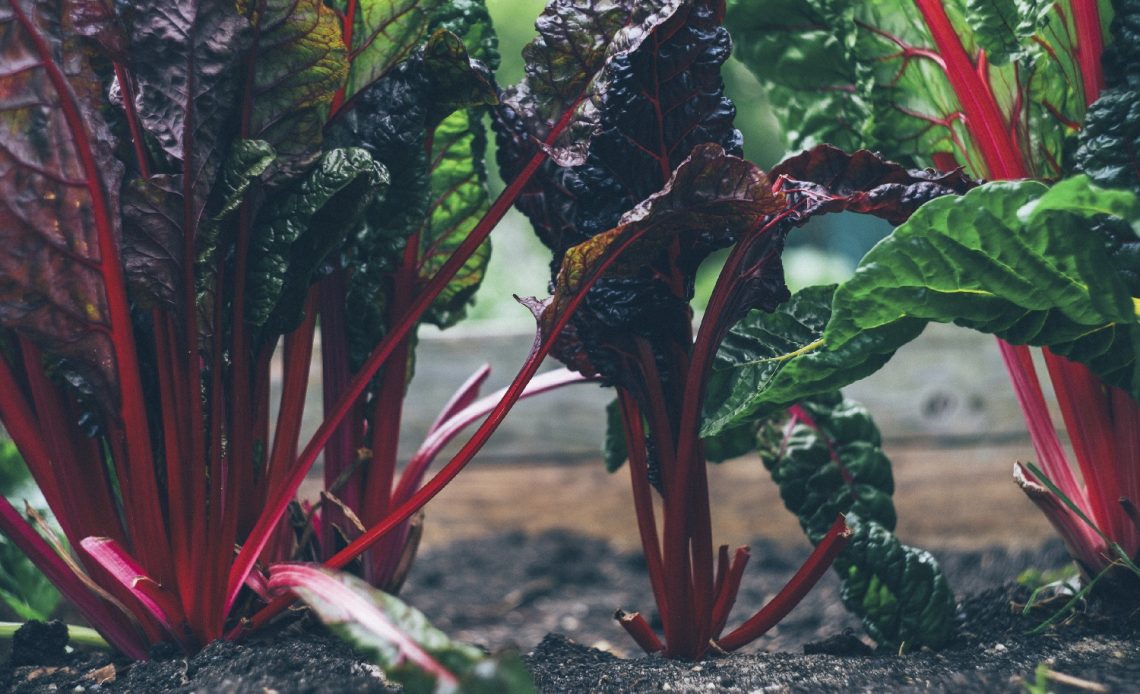

We’re here to help! Wild Yards is a completely free website that is 100% dedicated to helping you create a wildlife-friendly, sustainable yard. Read more
WildYards is reader-supported. When you buy a product through a link on our site, we may earn a comission. Every product is independently selected by our (obsessive) editors and our reviews are unbiased and objective. Read more about our mission or our privacy policy.
A member of the Chenopodiaceae family, Swiss chard is actually native to the Mediterranean region, contrary to what its name would lead you to believe. This dark, leafy green vegetable is an excellent source of vitamins A, E, and K, and it provides a healthy dose of magnesium and copper as well. Swiss chard is easy to grow, but it can fall prey to insects and nutrient deficiencies. Fortunately, swiss chard companion plants can help improve performance.
Swiss chard companion plants like celery, mint, garlic, and cilantro repel pesky insects, while other companions, such as marigolds and nasturtiums, draw the attention of valuable pollinators. And beans, radishes, and thyme improve soil conditions to help you grow the best Swiss chard possible.
How can Swiss chard companion plants improve crop yield?
Swiss chard is a cool-weather garden vegetable. It performs best when planted in spring and fall, in a spot where it gets plenty of sunlight, but also has some protection from the sun’s harsh afternoon rays. Swiss chard prefers neutral to slightly acidic soil that is rich in organic matter, but also well-draining.
By keeping a few Swiss chard companion plants nearby, you can help improve the growing conditions in your garden so your crop will thrive. Some of Swiss chard’s favorite companion plants help break up compacted soils, making it easier for water and air to penetrate. Others act as a ground cover to help retain as much moisture as possible.
Certain Swiss chard companion plants can be used as trap crops to keep common pests away from your prized vegetables. And flowering companions can be grown nearby to help attract the attention of valuable pollinators, like bees, butterflies, and predatory wasps — who also feed on damaging bugs, and can reduce pest populations in your garden.
What are the best Swiss chard companion plants for your garden?
Companion planting is an incredibly effective, all-natural strategy that helps improve plant performance while deterring the animals and insects that feed on them. When considering companion planting in your garden, the most important thing you need to keep in mind is your growing space.
When watered regularly, Swiss chard grows up to 24 inches tall. While it’s not the biggest vegetable out there, it can still take up quite a bit of room. Be sure to choose companion plants that will not only fulfill your needs, but that will also fit in your growing space.
Radishes
Fast-growing radishes also do well in spring and fall gardens because they love the cool weather, too. These plants take three to four weeks to mature from seeds, so they’re in and out of the ground fast. They grow well next to swiss chard because their root systems are shallow, never reaching far enough into the ground to compete with Swiss chard’s roots.
Radish tops cap out at around 18 inches, almost as big as Swiss chard, but never big enough to encroach on its growing space. For this reason, you can grow radishes as Swiss chard companion plants in the same row, where they can help shade the soil and keep moisture locked in.
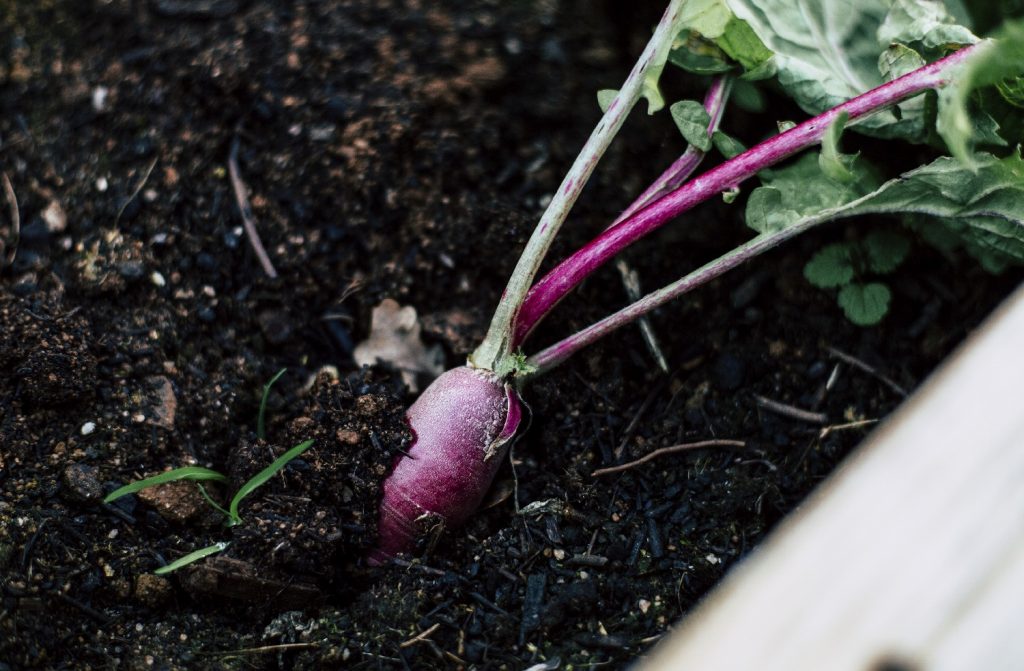
Beans
Bush beans, climbing beans, and peas all make wonderful Swiss chard companion plants and can be grown next to other garden favorites, too, including blueberries, radishes, and asparagus. Beans help improve nitrogen uptake in surrounding plants by making the nitrogen that’s already in the soil easier for them to utilize.
You can use beans as Swiss chard companion plants by growing them in nearby rows. However, beans work far better as a cover crop. Allowing the beans to grow, produce, and die back before plowing them under improves the nutrient content in your soil for the next growing season. That way your Swiss chard and other plants can reach their full potential.
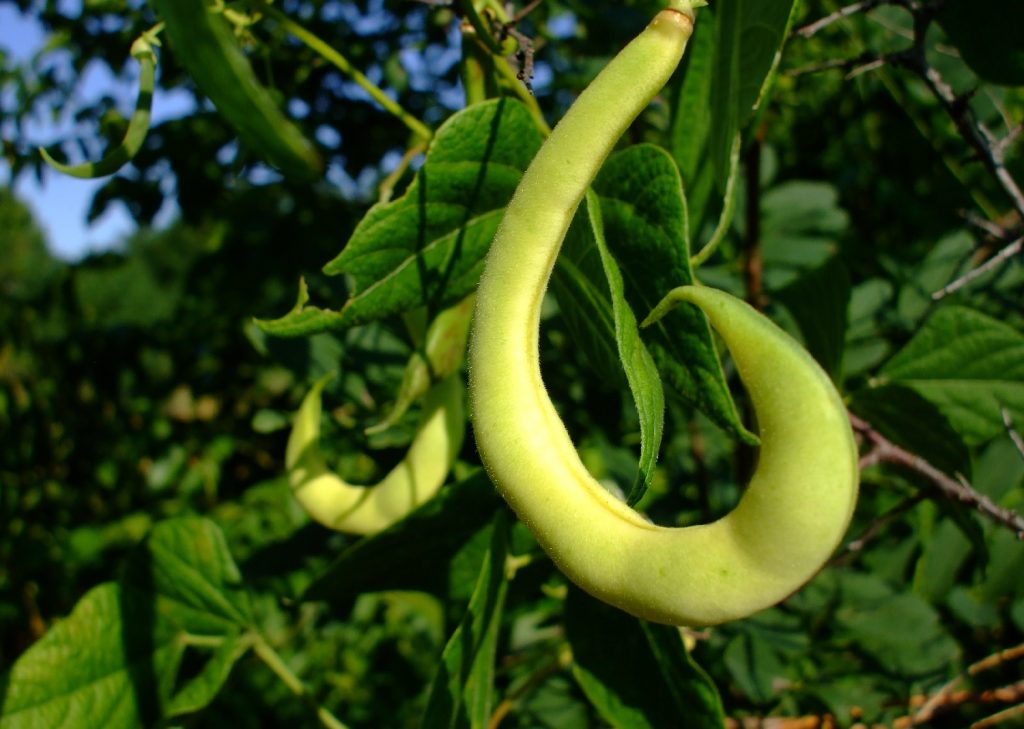
Celery
Swiss chard can fall prey to many garden pests, including armyworms, cucumber beetles, cutworms, cabbage moths, and more. But making use of insect-repelling Swiss chard companion plants like celery can help keep these bugs away from your vegetables.
Celery plants grow about 12 inches tall, so they never interfere with Swiss chard’s growing space. And because they have shallow root systems, they won’t use up the nutrients that your Swiss chard plants need to produce.
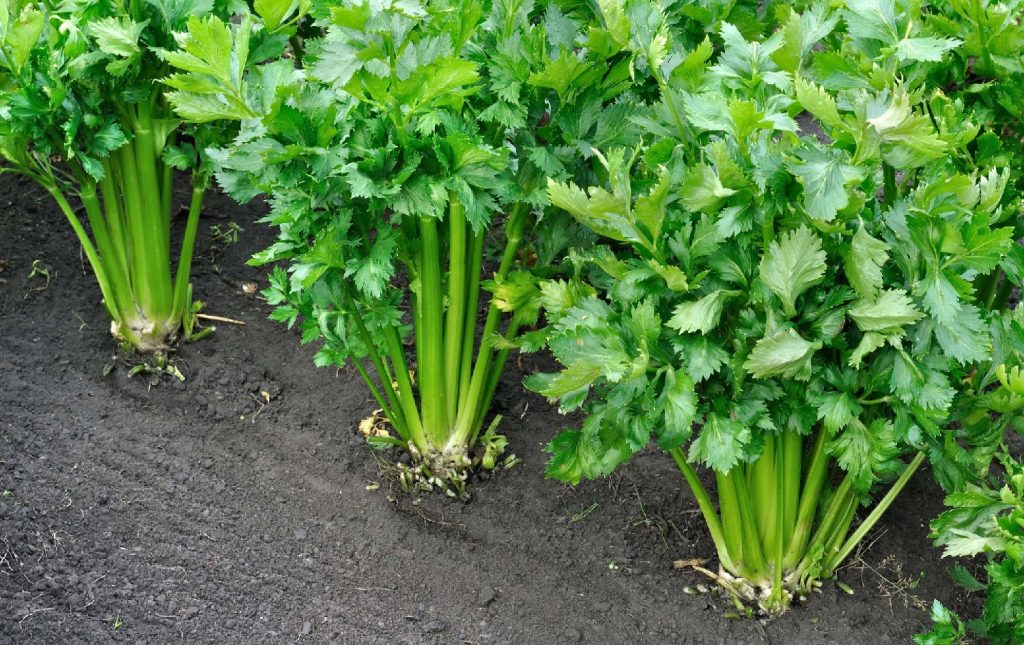
Nasturtiums
Swiss chard is easy to grow from seeds. But if you grow all of your vegetables from seeds, it can be difficult to remember where your rows are before the plants have sprouted. Nasturtiums work well as a border for your garden, marking off rows to help you determine which new sprouts are vegetables and which ones are weeds.
Nasturtiums are also frequently used as a trap crop. Aphids, mites, whiteflies, and earworms will all jump at the chance to feed on nasturtiums, keeping these pesky bugs away from your Swiss chard and other plants. Butterflies, bees, and other pollinators enjoy browsing this plant’s flowers, too.
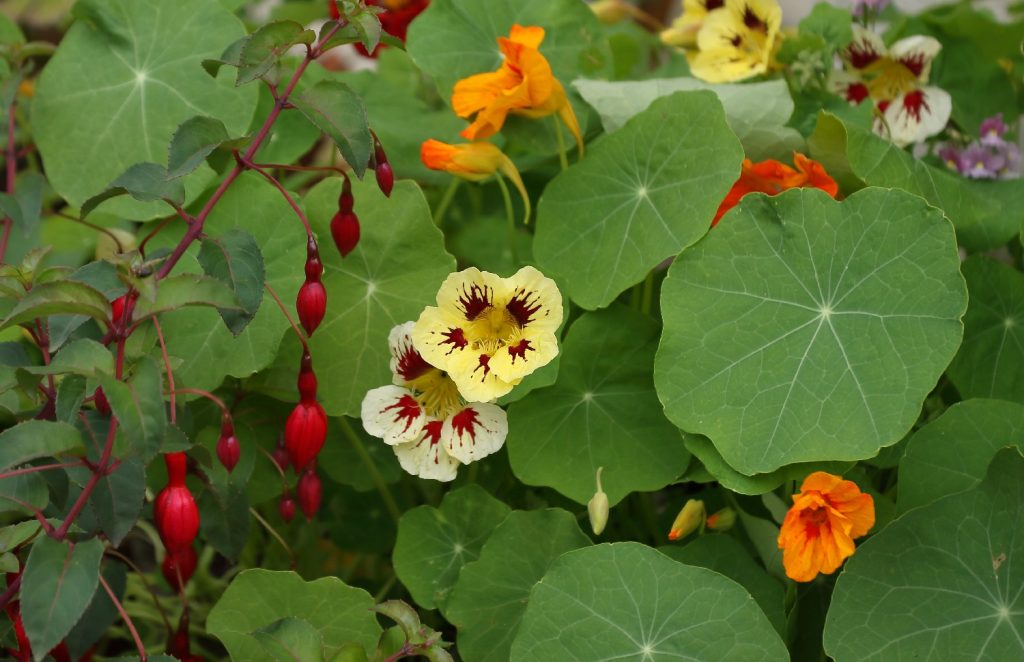
Onions
Onions can make great Swiss chard companion plants. But you have to be careful about how you grow them. These are root vegetables that reach fairly deep into the soil. When grown too close to Swiss chard, these two plants will steal nutrients away from each other, so neither of them will grow well.
But by alternating rows of onions with rows of Swiss chard, they will be able to help repel Swiss chard-eating bugs, including slugs, snails, and caterpillars, without stealing minerals away from them in the process.
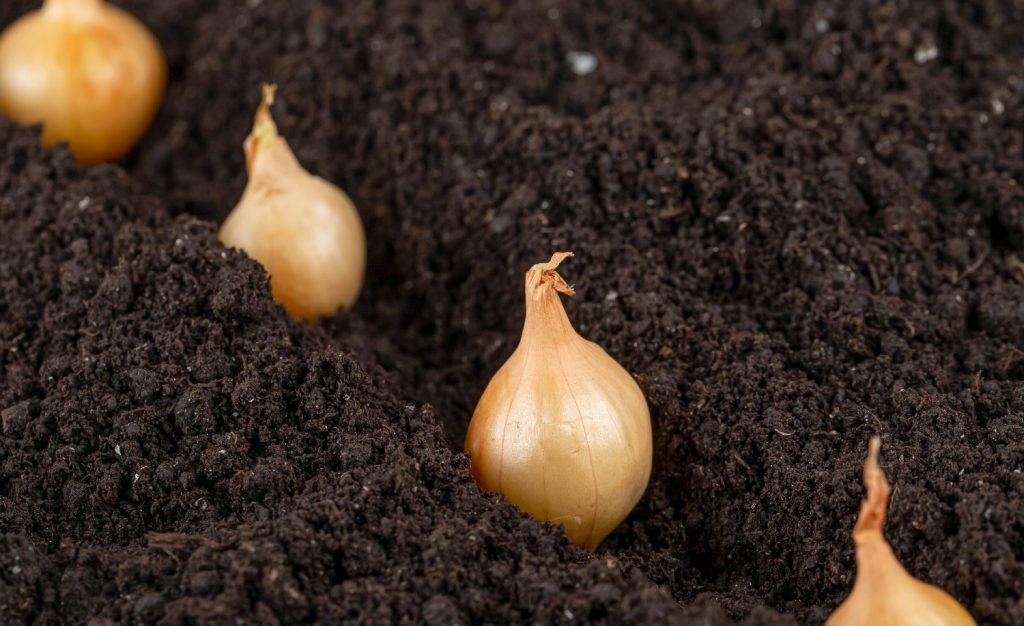
Cilantro
Another plant that can help keep insects away from your Swiss chard is cilantro. This aromatic herb grows great in cool-weather gardens. And its shallow root systems only absorb nutrients from the uppermost layer of the soil, so they can be grown in the same row as your Swiss chard plants.
By alternating cilantro plants with Swiss chard plants within the same row, you can help keep bugs off of both of them. Growing them closely so they fill in helps cast shade on the soil below, retaining moisture and keeping roots cool.
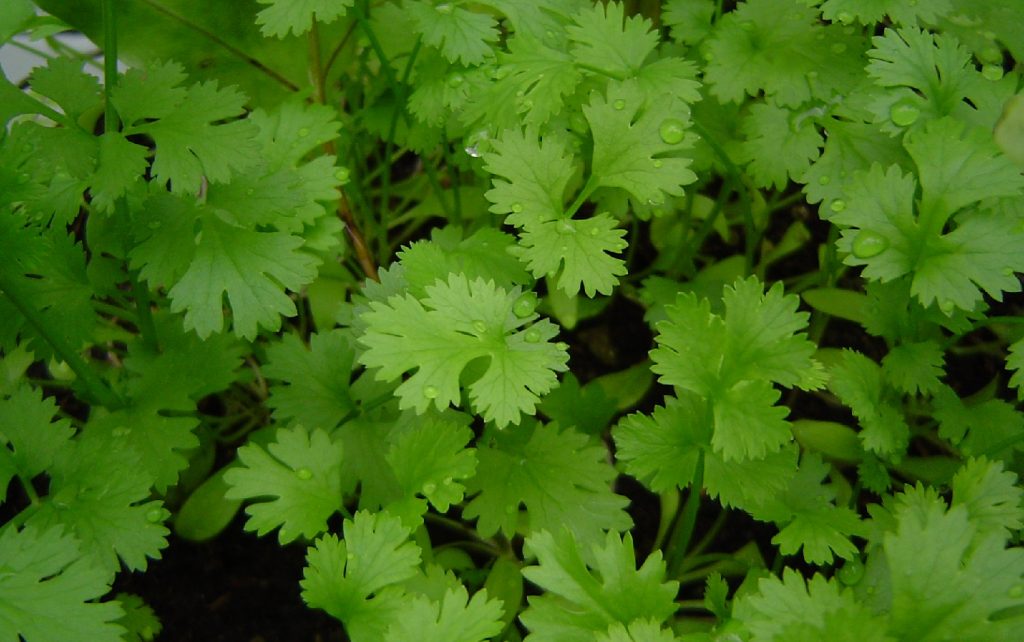
Mint
Another aromatic herb, mint attracts bees, butterflies, and many other important pollinators to your garden which significantly improves crop yield. And while it draws the attention of pollinators, it also repels garden pests that can damage your Swiss chard plants.
Mint is a low-growing ground cover that works well as a living mulch. You can plant mint at the base of your Swiss chard plants where it will loosen compacted soil, help the ground retain moisture, and keep temperatures down at the base of the plants. And they do all of this without competing with other plants for nutrients because they have shallow root systems.
Garlic
Like all members of the allium family, garlic contains high levels of allicin, the sulfur-rich compound that gives it such a potent smell. And it’s that allicin content that makes garlic such a wonderful Swiss chard companion plant because it helps keep insects and hungry foragers away.
Garlic oil is extremely effective as an all-natural pesticide. So alternating rows of Swiss chard with rows of garlic, or simply growing all of your Swiss chard plants sandwiched between two rows of garlic, can help repel armyworms, mites, aphids, and other pests. Additionally, garlic’s nectar-rich flowers draw the attention of local pollinators, improving pollination rates in your garden.
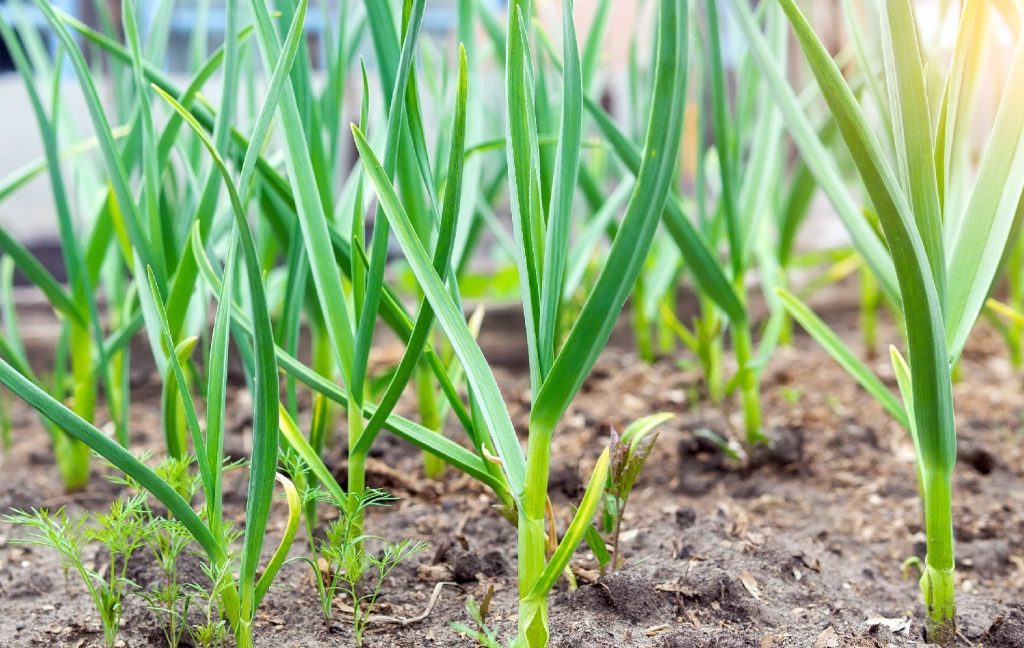
Broccoli
Swiss chard and broccoli do not compete for the same nutrients, so they can be planted in the same row without causing problems for each other. These plants benefit from being planted close together because neither will overtake the other, and their leaves help fill out the airspace around them, keeping the soil beneath them in the shade and preventing moisture loss.
This man-made vegetable can be grown as a trap crop, too. Worms, beetles, aphids, and other bugs that like to dine on Swiss chard will happily eat broccoli instead if it’s available. If pests are a major problem in your garden, sacrificing a row of broccoli to keep them off your Swiss chard might just do the trick.
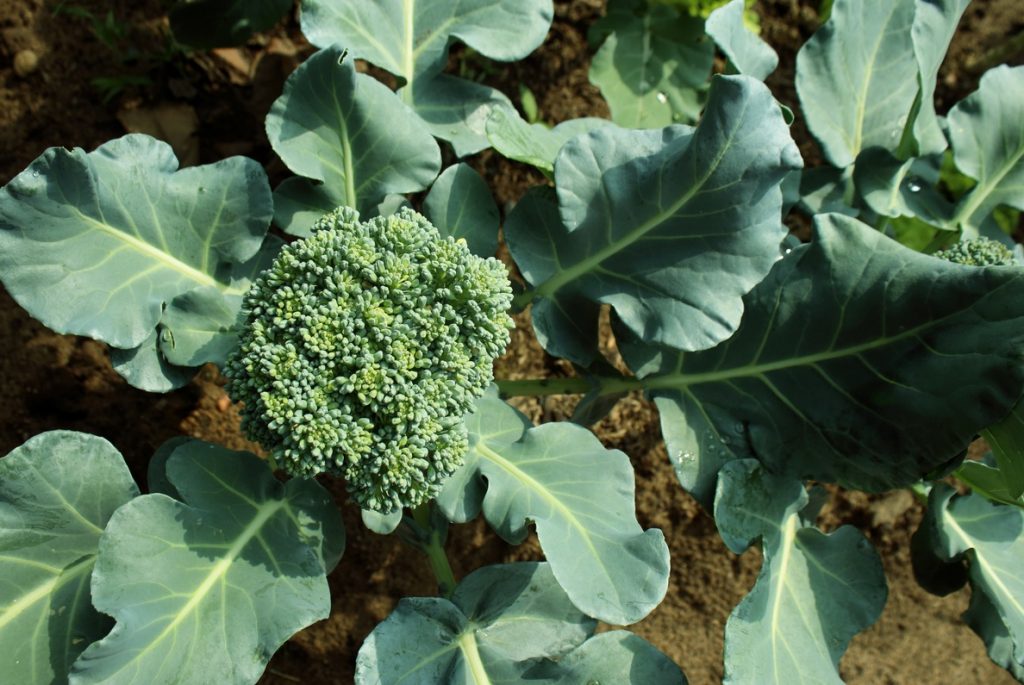
Marigolds
Deer will eat Swiss chard if there isn’t enough native foliage around for them to snack on. However, they generally do not like marigolds. These smelly flowers are less than appetizing to hungry foragers, plus they’re tough and fibrous, so they’re difficult to chew. Growing marigolds near your Swiss chard will help prevent the wildlife from nibbling on them.
Marigolds are loaded with pollen and nectar, so they’re popular with butterflies, hoverflies, and wasps — bugs that will facilitate the pollination process in your garden, and prey on smaller insects, like aphids, to prevent them from destroying your vegetables.
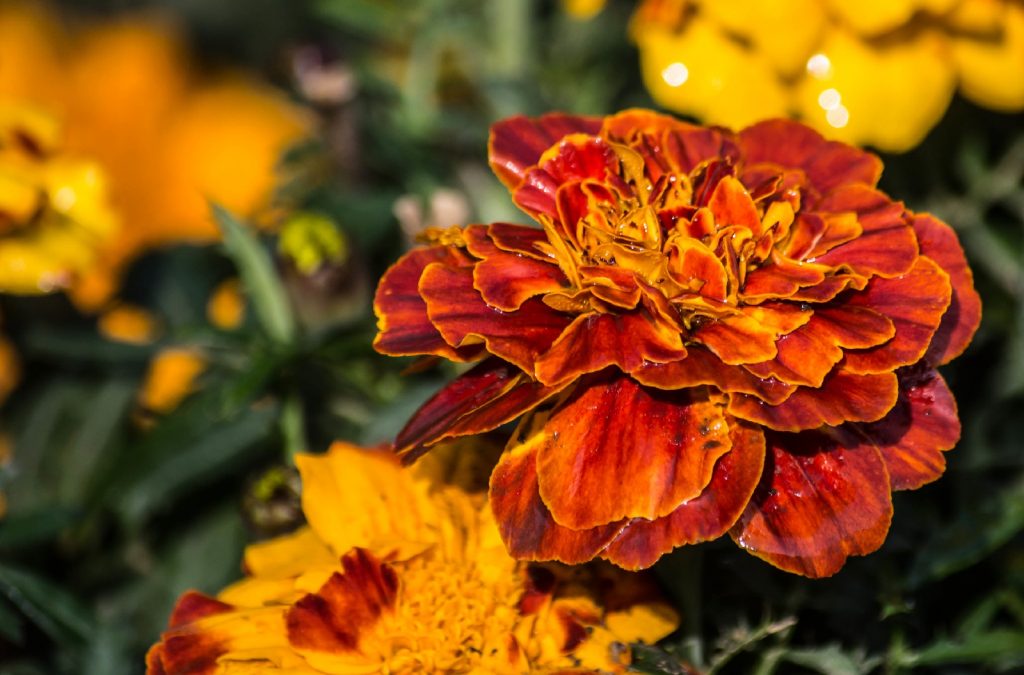
Lavender
This aromatic low-maintenance herb has been grown as a Swiss chard companion plant for years because it helps improve the vegetable’s flavor. Lavender is a fuss-free plant that doesn’t require much nutrition or water to thrive, so it will never be a threat to your Swiss chard’s growth.
Lavender’s pungent essential oils are present in every part of the shrub, from the leaves to the stems, and most foliage-eating bugs are repulsed by the smell of it. Rabbits and deer will also avoid eating lavender, so this herb can help deter all sorts of pests from munching on your Swiss chard. Additionally, when lavender blooms, it helps draw more bees and butterflies to your garden to help pollinate your crops.
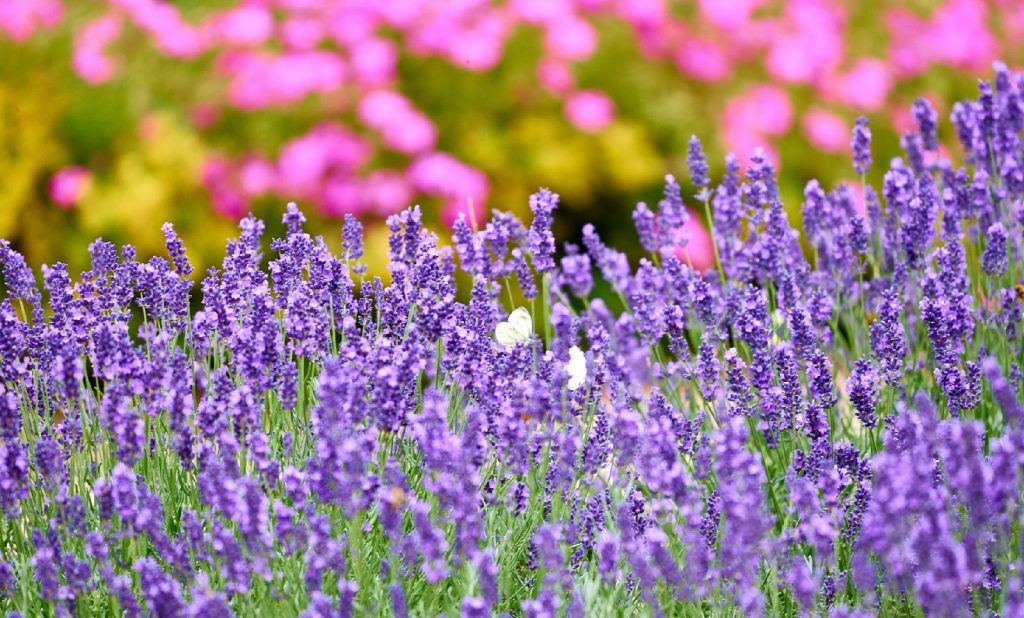
Which plants should you avoid growing with Swiss chard?
Certain plants can drastically improve Swiss chard performance, but not every plant will benefit your Swiss chard. Plants that have deep, extensive root systems and that require a lot of nutrients will steal valuable minerals away from your Swiss chard, hindering growth. Be sure to give your Swiss chard plenty of room to expand, both above ground and below the soil. Avoid growing the following vegetables as Swiss chard companion plants.
Beets
Beets belong to the same family of vegetables as Swiss chard. As such, these two plants compete for the same types of nutrients, so they don’t do well when grown near each other. And beets tend to attract the same types of bugs that like to eat Swiss chard, so to avoid any insect infestations, keep these two veggies far apart.
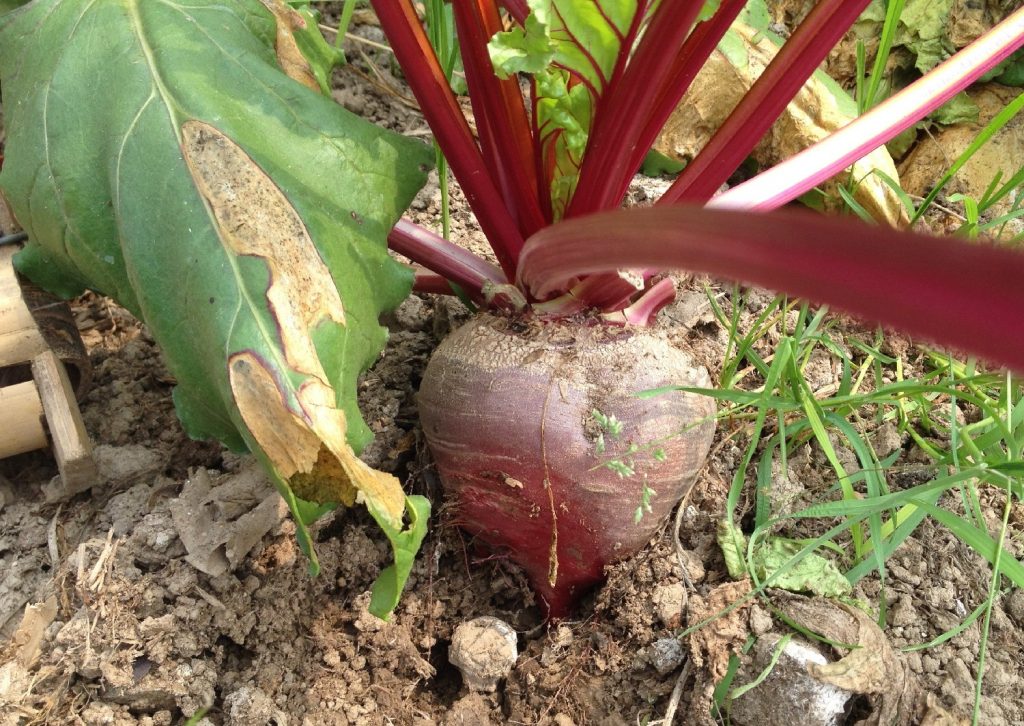
Spinach
Like beets, spinach is also a member of the Chenopodiaceae family, so it, too, attracts insects that prey on Swiss chard. This leafy green plant also competes with Swiss chard for similar minerals, so growing them near each other will result in poor performance from both of them. If you want to grow spinach and Swiss chard, we recommend growing them on opposite sides of your vegetable patch or growing one in the spring and the other in the fall, so they don’t have to compete with each other.
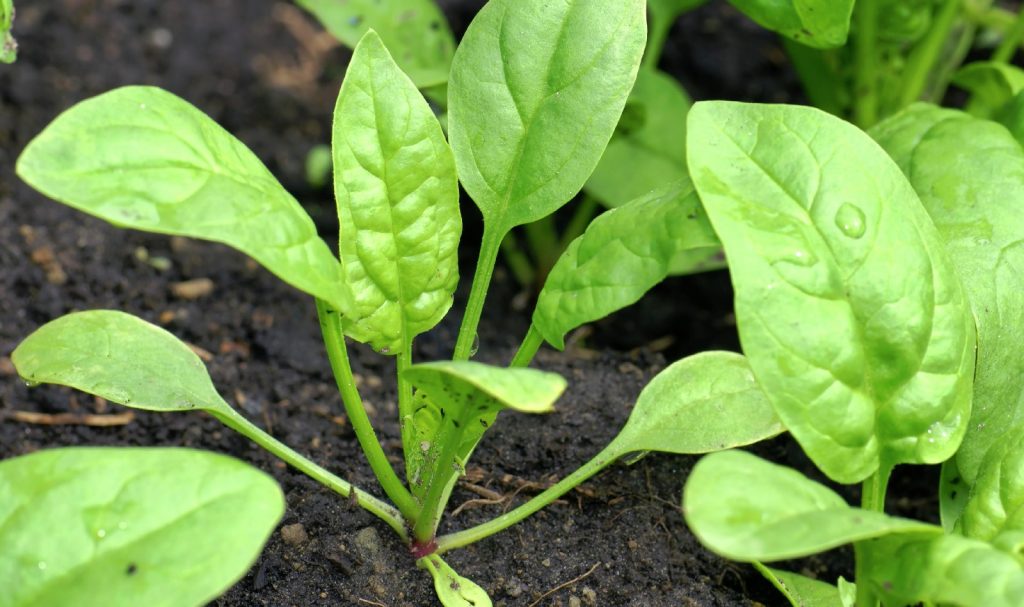
Cucumbers
Swiss chard and cucumber plants share many of the same pests. Slugs, beetles, worms, and caterpillars may be attracted to your cucumber plants, and if your Swiss chards are planted close by, they may latch onto them, next. Additionally, cucumber plants grow to be quite large. If the vines aren’t trained to grow up a trellis, they easily overtake surrounding plants. So keep your Swiss chard out of their reach and on the opposite end of your garden.
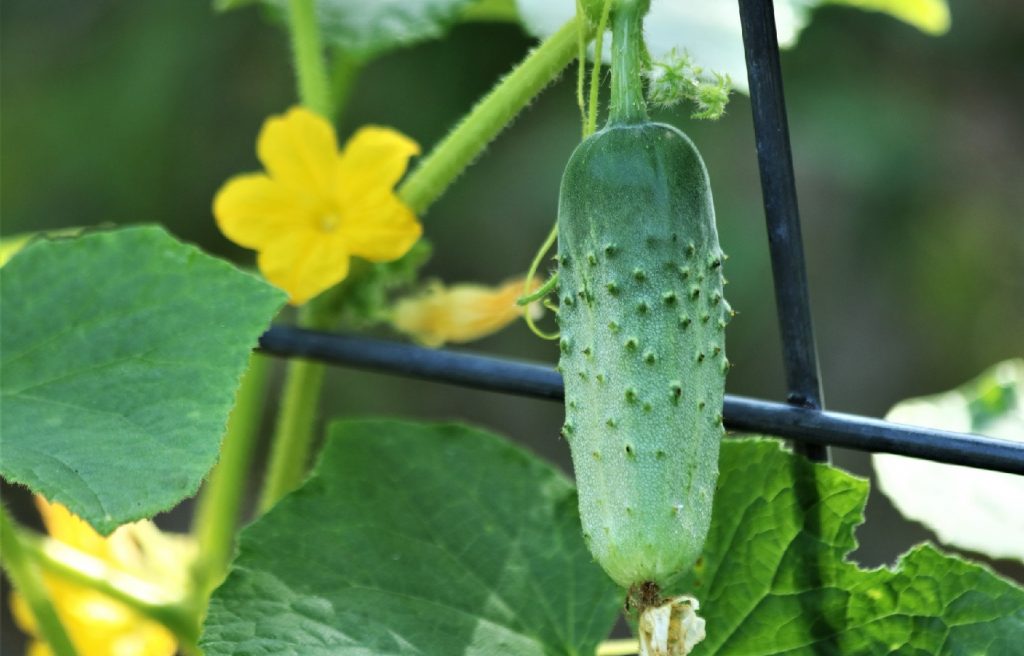
Potatoes
Potatoes are deep-growing root vegetables that require a lot of nutrients to mature. Growing potatoes near your Swiss chard will suck minerals away from them, resulting in small leaves and stunted plants. If the nutrients in your garden’s soil are in short supply, growing potatoes nearby can kill your Swiss chard plants altogether, so avoid making these two neighbors in your vegetable patch.
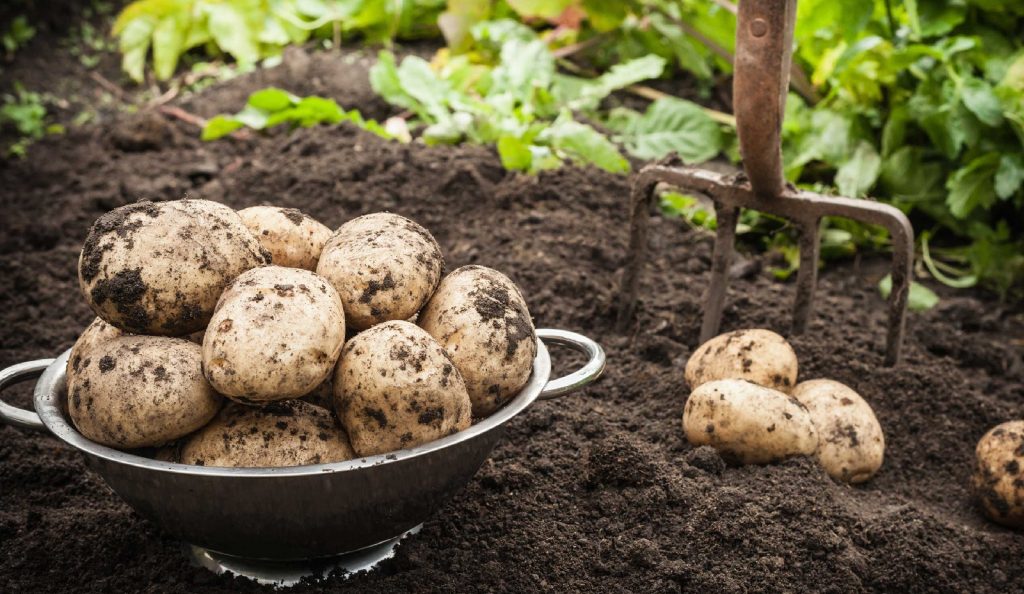
Melons
Watermelons, cantaloupes, and honeydew melons have fairly deep root systems because they rely heavily on water intake to produce. This, coupled with the fact that the melon plants themselves sprawl out and encroach on the growing space of surrounding plants, makes them poor Swiss chard companion plants.
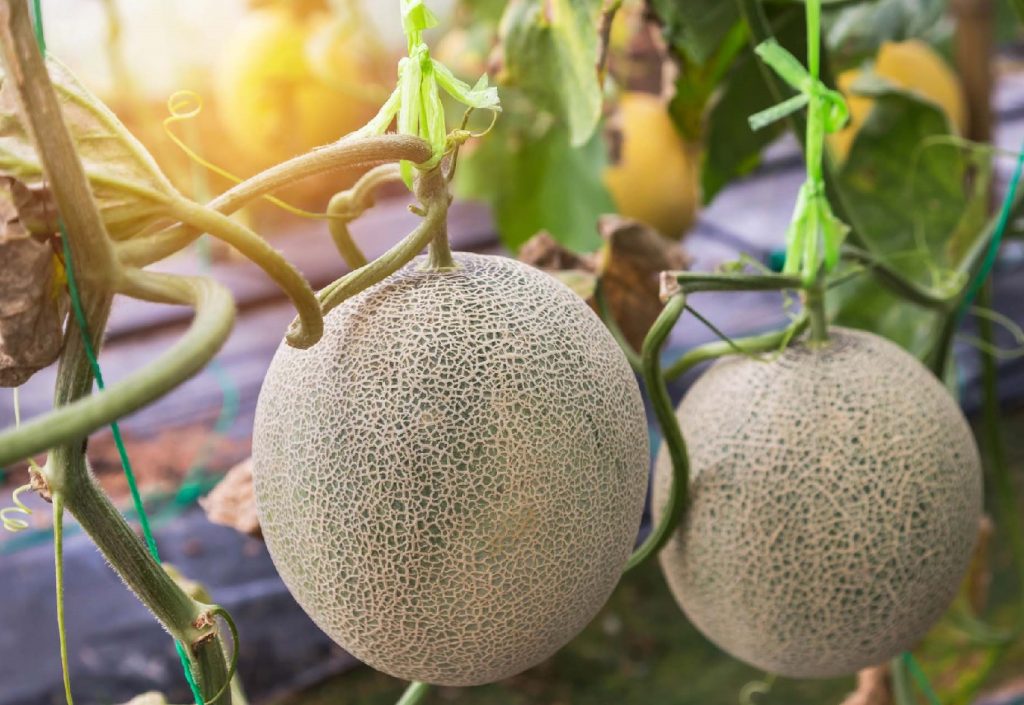
Are Swiss chard companion plants worth the extra time and effort?
Swiss chard companion plants help repel harmful insects while also attracting beneficial pollinators to support your crop’s production. These plants work in tandem with your Swiss chard, improving your soil’s nutrient content and holding moisture in the soil. All of this spares you some additional labor and enables your Swiss chard plants to produce the tastiest foliage possible.
